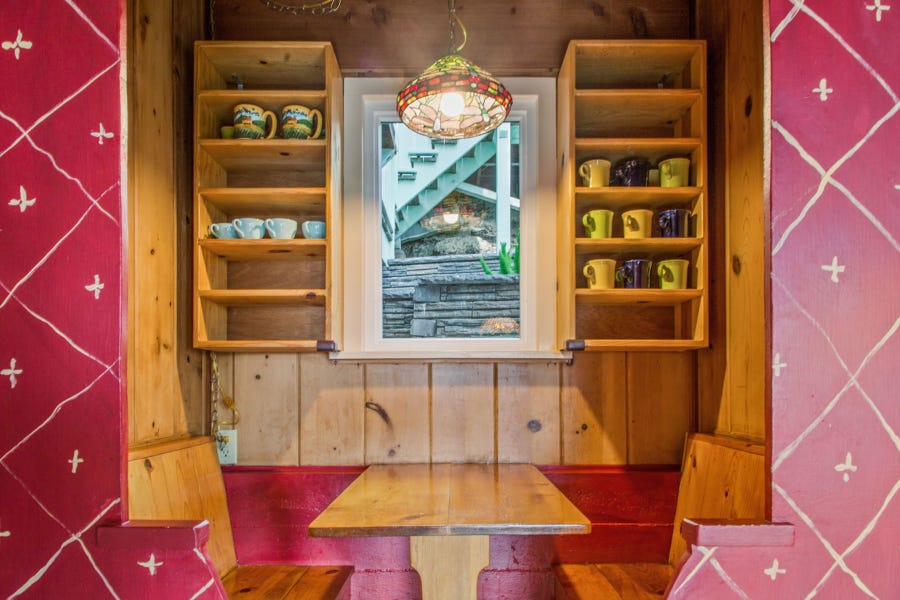#28 Dreamlike houses, Netsuke and Norman's Law
It’s Design Lobster #28. This week we’re dreaming of houses and whimsical sculptures you can wear on a belt. Slip into a reverie. 🌜
Enjoying Design Lobster? Please share it with a friend, colleague or loved one. ✨
Question: How can you design a house to feel like dreamlike?
Christopher Alexander is a British-American architect whose 1977 book A Pattern Language has inspired designers of building and cities, as well as those working in software development. Ward Cunningham, the creator of the first wiki, credits Alexander’s thinking as their inspiration.
Sala House, in Albany, California – built between 1983 & 1984 – was Alexander’s first building project in the United States. Built for a family, the design process was unconventional, Alexander was interested in his client’s memories of where they had been most comfortable or happy and recreating these in the architecture. The space-making is highly associative, the picture above for example shows a breakfast nook modelled after the Linz cafe in Vienna, Austria.
“The buildings that I build very often have a dreamlike reality, I don’t mean by that they have a fantasy quality at all, in fact quite the reverse. They contain in some degree the ingredients that give dreams their power … stuff that’s very close to us.”
— Christopher Alexander
The interior and exterior shots of this house look dated now, but I’m very interested in the way Alexander approached design as a way of matching a client’s psychological history with a unique mix of preset patterns. Building their dreams with a kit of parts. There’s a lot of that approach to be found in the way digital technology is designed today, for good and ill. It started here, folks.
Design takeaway: What associations does your design have?
🏡 More pictures of Sala House.
Object: Netsuke
Because traditional Japanese clothes like the kimono had no pockets, Japanese men wore small containers called inrō on sashes around their waist to carry objects. These were normally fastened shut with a toggle called a netsuke. Over time these toggles became elaborate objets d’art of increasing artistic merit. Edmund de Waal’s 2010 memoir The Hare with the Amber Eyes describes an especially famous one that had formerly belonged to his family. I found the cheeky squid above in the V&A archives. It was carved out of Boxwood in the late 19th century.
I am always happy when designers find ways of adding delightful flourishes to useful things. Who says a toggle should not be a carved character – turning every opening and closing of your inrō into a miniature drama. Making useful things speak with their own distinct voice is the joy of good design.
Design takeaway: Could an ordinary part of your design be an opportunity for some sculptural extravagance?
🥋 More on netsuke from The Met.
Quote: “The day the product team is announced, it is behind schedule and over its budget.”
– Donald Norman, Designer and Author
A more lighthearted quote this week from old favourite Don Norman. Describing here a situation that will be familiar to many readers. Why is it so hard to produce great design work in a timely and cost-effective way? Perhaps the answer lies in the way that discovery is an inherent part of the design process. It’s only once you begin designing that you understand the real problem properly – playing inevitable havoc with timetables. 😬
Keep discovering. 🦞
Has this email been forwarded? Sign up below to get the weekly emails delivered to you. ✏️





